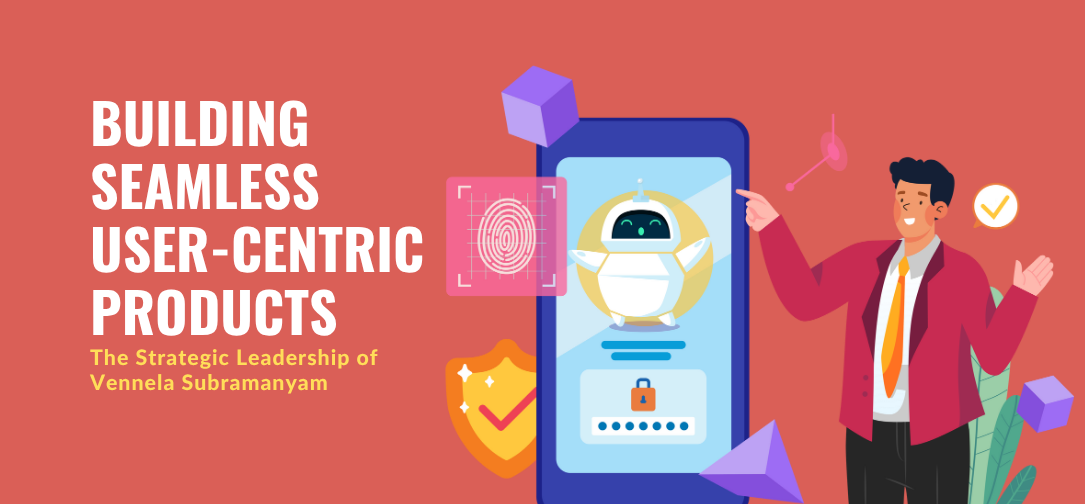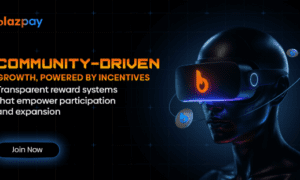In the contemporary landscape of product management, the central challenge lies in crafting offerings that not only captivate and delight users but also decisively drive business success within fiercely competitive markets. The principle of user-centricity has emerged as a critical differentiator, moving beyond a mere best practice to become a fundamental engine for financial performance and sustained competitive advantage.
Research indicates that companies prioritizing customer experience achieve revenue growth 4% to 8% higher than the market average and can be significantly more profitable than their peers. Furthermore, a focus on the user cultivates deeper customer loyalty and correlates strongly with achieving top business goals.
However, a notable discrepancy exists between corporate perception and customer reality; while 80% of companies believe they are customer-centric, only 8% of their customers concur, highlighting the profound difficulty and strategic importance of embedding a truly user-focused ethos within an organization.
Vennela Subramanyam stands out as a product leader who consistently embodies this user-centric philosophy, adeptly navigating the intricate balance between evolving customer needs and concrete business outcomes throughout her diverse career.
Subramanyam’s journey began with a Bachelor’s degree in Engineering in Bangalore, India, followed by an early experience at Amazon that ignited her passion for product development’s potential impact. This led her to pursue a Master’s in Information Science at NJIT in the US, focusing on user-centered experience and design and system analysis. This foundation instilled in her a methodical, systems-thinking mindset, which she now applies to design intuitive product roadmaps and scaling feature sets that impact users.
Her career trajectory reflects a dynamic exploration across varied environments, from the fast-paced fintech startup world at RobustWealth, where she gained hands-on experience across the full product lifecycle, to the strategic consulting realm at Ernst & Young (EY), empowering clients to build high-performing product teams. Now, at Google, she operates on a global scale, leading learning transformation initiatives impacting millions.
Central to her approach is a deeply ingrained belief in user-centricity, underpinned by data-driven decision-making and a commitment to continuous improvement.
Product management, as a discipline, sits critically at the intersection of business strategy, technological execution, and user experience. Its strategic importance is increasingly recognized, with 79% of executives viewing it as critical to company success.
Drawing from her direct experiences and supported by relevant industry research and analytics, it explores her approach to balancing core product elements, developing effective roadmaps, leveraging transformative technologies like AI and data, fostering stakeholder alignment, defining and tracking success through meaningful metrics, navigating the risks inherent in innovation, ensuring sustainable product scaling, and anticipating the future trends shaping the industry.
Aligning business goals, technical feasibility, and user needs
The creation of successful products necessitates a delicate and deliberate harmonization of three critical vectors: overarching business objectives, the practical constraints of technical feasibility, and the essential element of user desirability. Achieving this balance is foundational; misalignment between these areas is a common precursor to wasted resources, market failure, and slower time-to-market.
Subramanyam approaches this fundamental balancing act systematically. Her process begins with a deep, individual understanding of each component: defining clear, measurable business goals such as increasing customer acquisition or growing assets under management; developing profound empathy for user pain points and needs, like simplifying complex onboarding processes or making transactions more intuitive; and collaborating closely with engineering teams to rigorously assess technical feasibility, ensuring proposed solutions are achievable and scalable within existing constraints.
Subramanyam emphasizes the importance of this initial, thorough understanding. “As a product manager, I understand that successful products require balancing business goals, technical feasibility, and user needs,” she states.
One of Vennela’s key differentiators as a product manager is her dedication to user-centered development. She actively incorporates usability testing and customer journey mapping into product discovery phases, ensuring that every solution resonates with actual user needs. Whether it’s reducing friction in onboarding flows or identifying underserved market segments, her work is always rooted in user empathy and iterative learning.
“My approach involves first deeply understanding each element: defining clear business objectives, like increasing acquisition or growing assets under management, and empathizing with user pain points and needs, such as simplifying the onboarding process or making transactions easier.”
This foundational clarity enables effective collaboration across product, design, and engineering teams, fostering the shared vision necessary to navigate the inherent trade-offs. This structured approach mirrors frameworks like those used in product management, which explicitly map the interplay between customer segments, value propositions, resources, and revenue streams.
The practical application of this balancing act is illustrated by Subramanyam’s experience at RobustWealth, where she spearheaded the strategy, conceptualization, and launch of a B2B2C and D2C onboarding product. This initiative required navigating the inherent tension between the user’s desire for a significantly faster and simpler onboarding experience and the business’s strategic goal of increasing client acquisition rates.
Concurrently, the team had to meticulously validate the end-to-end technical workflow to ensure the envisioned features were viable and to inform realistic roadmap planning. “This project required balancing the user’s need for a faster, easier onboarding process with the business goal of increasing client acquisition,” Subramanyam explains.
“Simultaneously, we had to ensure the technical feasibility of the E2E workflow to ensure the features we had in mind were feasible and to plan the roadmap accordingly. We used an iterative approach, focusing on delivering a digital product that addressed key user needs while driving significant business results and ensuring technical viability.”
This iterative methodology, focusing on delivering core value while continuously validating against all three constraints, reflects key Agile principles and the practical application of balancing desirability, viability, and feasibility. Research confirms that such alignment is crucial, leading to faster time-to-market and greater resource efficiency, ultimately resulting in products that genuinely resonate with users and achieve strategic objectives.
Developing scalable and relevant product roadmaps
A product roadmap serves as a critical strategic artifact, intended to guide development efforts towards long-term scalability and sustained market relevance. However, crafting and maintaining effective roadmaps presents a significant challenge, with 65% of product managers citing it as their most difficult task.
A common pitfall is confusing the strategic roadmap with short-term release plans or backlogs, which obscures the larger strategic context. An effective roadmap, in contrast, functions as a shared source of truth, aligning the entire organization toward common goals and preventing resource misallocation.
Subramanyam champions an approach centered on agile and iterative development to ensure roadmaps remain living documents that foster adaptability. She emphasizes breaking down the overarching vision into smaller, manageable components, instituting regular review cycles, and prioritizing cross-functional collaboration to maintain focus on desired outcomes rather than rigid feature lists.
“To ensure a product roadmap delivers long-term scalability and market relevance, I prioritize agile and iterative development,” Subramanyam notes. “This involves breaking down the roadmap into smaller, manageable components, allowing for regular review cycles, and emphasizing cross-functional collaboration.”
This methodology directly aligns with Agile principles, which are reportedly used by 71% of companies and are essential for adapting to the inherent volatility of modern markets. Such flexibility contrasts sharply with static, feature-driven roadmaps that can lead organizations into a “feature factory” mentality, disconnected from strategic goals and evolving customer needs.
Central to Subramanyam’s road mapping philosophy is maintaining a market-driven direction. This involves structuring the roadmap around clear strategic themes and prioritizing initiatives based on quantifiable market criteria and the potential value delivered to the customer.
User needs and the overall user experience remain paramount throughout this process. Furthermore, she advocates for iterative validation, often beginning with a Minimum Viable Product (MVP) to test the core value proposition with real users before committing significant resources to scale.
“Understanding customer needs is paramount, defining features with a strong focus on user experience,” she states. “The roadmap must prioritize features that deliver the most value to customers, clearly communicating the value proposition to stakeholders.”
“Finally, iterative validation and adaptation are crucial, starting with a Minimum Viable Product (MVP) to validate the core value proposition.” This commitment to validation extends to the roadmap itself, which requires regular reviews and adjustments to incorporate new learnings, customer feedback, and shifts in the market landscape.
The effectiveness of such a structured, yet adaptive, road mapping approach is supported by findings that companies utilizing roadmaps report significantly higher product launch success rates (30% higher according to Product Plan) and increased developer productivity (25% higher according to Aha!), highlighting the tangible benefits of Subramanyam’s methodology.
Leveraging AI, automation, and data for impact
Artificial intelligence (AI), automation, and data-driven insights represent powerful levers for enhancing product efficiency and delivering measurable business impact. The adoption of these technologies is accelerating rapidly; 92% of product managers anticipate a long-lasting impact from AI, and 65% of organizations report regular use of Generative AI, nearly double the rate from the previous year.
Subramanyam approaches the integration of these technologies not from a technology-first perspective but by identifying specific, high-impact problems or opportunities where they can provide a demonstrably superior solution compared to traditional methods.
This could involve addressing user pain points, alleviating internal bottlenecks, or achieving strategic business goals more effectively, particularly for tasks that are repetitive, error-prone, or require complex pattern recognition.
A cornerstone of Subramanyam’s methodology is the rigorous definition of clear, measurable objectives and Key Performance Indicators (KPIs) before embarking on any initiative leveraging AI, automation, or data. “My core approach begins not with the technology itself, but with identifying specific, high-impact problems or opportunities,” she clarifies.
Subramanyam takes a purposeful, scenario-based approach to AI, choosing between predictive and generative models depending on the nature of the user problem. She applies predictive AI when there’s an opportunity to use historical user behavior to streamline decisions or reduce friction. For example, in onboarding or feature adoption flows, predictive models can surface the next-best action, personalize messaging, or flag at-risk users, ensuring the experience feels intuitive and proactive.
On the other hand, she turns to generative AI when the goal is to scale content, enhance discovery, or create natural, human-like interfaces. Whether it’s powering conversational support, dynamically generating documentation, or summarizing insights for different stakeholder personas, generative models help deliver richer, more adaptive user experiences. By aligning the AI technique with the product’s intent and validating through user feedback, she ensures that technology amplifies usability instead of complicating it.
“Whether it’s a user pain point, an internal bottleneck, or a strategic business goal, I look for areas where AI, automation, or data can provide a superior solution compared to traditional methods.” This disciplined, upfront definition of success is critical for quantifying the baseline state, setting specific targets (e.g., reducing operational costs, increasing user engagement), and ultimately demonstrating the tangible value delivered.
This aligns directly with the growing emphasis on measuring the ROI of AI, a practice deemed vital by 70% of business leaders for sustained success. This problem-first, value-driven strategy ensures technology serves strategic ends, avoiding the common pitfall of implementing technology for its own sake.
Research supports this potential, showing AI can boost labor productivity by up to 40% and reduce sales costs by 40-60%.
The practical implementation follows a strategic and iterative path. Subramanyam prioritizes initiatives based on technical feasibility, data requirements, and potential ROI.
For AI and automation, this often involves starting with smaller MVPs or focused pilots to learn and refine before scaling – a prudent approach given the complexities and potential risks. Close collaboration with engineering, data science, and other relevant teams ensures seamless integration into the product and its workflows, with careful attention paid to data quality, potential biases, data privacy, and security.
For data-driven insights, robust instrumentation for data collection and the application of analytical techniques like segmentation and funnel analysis are key. Crucially, Subramanyam views leveraging these technologies as an ongoing cycle of measurement and iteration.
“Post-launch, I continuously monitor performance against the defined KPIs for all AI, automation, and data-informed initiatives,” she explains. “I actively gather feedback from both users and internal teams, analyze the results, and use these insights to refine the AI models, adjust automation rules, or inform future product decisions.”
“My role is to rigorously measure the achieved impact – quantifying efficiency gains, demonstrating user value, and proving business outcomes – to validate investments and guide future product strategy based on evidence, not just intuition.” This continuous loop of monitoring, feedback, and refinement is essential for optimizing performance and ensuring alignment with evolving needs.
Given AI’s potential to add $4.4 trillion in annual productivity globally and the significant focus on measuring the ROI of AI and automation in product engineering, Subramanyam’s structured, iterative, and evidence-based approach provides a valuable model for harnessing these transformative technologies effectively.
Key performance indicators central to this process might include operational efficiency metrics like processing time or error rates, user-focused metrics like adoption rates or satisfaction scores, and financial metrics like ROI.
Bridging communication gaps for stakeholder alignment
Stakeholder alignment is not merely a desirable aspect of product development; it is the bedrock upon which successful products are built. However, achieving and maintaining this alignment is notoriously challenging, often hindered by the inherently different perspectives, priorities, and languages of key groups such as technical teams, executives, and customers.
The consequences of misalignment can be severe, manifesting as wasted resources, project delays, erosion of trust, operational inefficiencies costing 10% or more of annual revenue, and even outright product failure. Subramanyam approaches this critical function with a strategy grounded in empathy and keen observation, seeking to understand not just the explicit statements but also the underlying concerns that drive stakeholder behavior.
“My approach to stakeholder communication is rooted in empathy and careful observation,” Subramanyam shares. “You have to read between the lines to understand the unspoken concerns that manifest as disengagement, frustration, or misaligned feedback.”
“It’s about recognizing that each stakeholder has unique communication needs and challenges.” This empathetic stance allows her to proactively identify potential communication breakdowns and foster a more collaborative environment.
For Subramanyam, bridging stakeholder communication gaps is not just about organizational alignment—it’s foundational to building user-centered products. When communication falters, product decisions often default to internal assumptions rather than real user needs. By fostering open dialogue between cross-functional teams—engineering, design, support, and marketing—she ensures that user insights aren’t lost in translation.
This enables teams to coalesce around the actual problems users face, not just feature requests or business demands. Whether it’s translating technical constraints into user-impact terms for business leaders or sharing usability test findings with engineers to guide implementation details, her communication strategy keeps the voice of the user present at every decision point. In her view, empathetic communication is not separate from product development—it’s the mechanism that keeps it user-driven.
Defining and tracking product success with KPIs
In the dynamic world of product development, Subramanyam stands out for a disciplined yet deeply empathetic approach to building products: by rigorously defining, tracking, and interpreting success metrics, always with the user at the forefront. For Subramanyam, Key Performance Indicators (KPIs) are not just numbers; they are the voice of the user, guiding every strategic decision and ensuring that product initiatives deliver tangible, impactful value.
“My fundamental belief, “Subramanyam explains, “is that true product success isn’t about what we think is impressive, but about what genuinely serves our users and ultimately drives business value because it serves our users. That’s why I’m hyper-focused on metrics that reflect true value and genuine progress, actively avoiding ‘vanity metrics’ that might look good on a slide but offer no actionable insight into user experience.”
Subramanyam’s comprehensive approach to measurement monitors KPIs across three vital, interconnected dimensions: customer and user engagement, business performance driven by user value, and product development efficiency geared towards user needs.
Understanding the user’s journey: Engagement as the core
For Subramanyam, the user’s journey is the starting point for all measurements. “When it comes to customer and user engagement,” she asserts, “I prioritize understanding how users interact with the product and whether they’re truly deriving value. It’s not just about active users; it’s about meaningful engagement.”
Key metrics that Subramanyam meticulously tracks include:
- Conversion Rate: “This shows us how effectively we’re guiding potential users towards valuable actions, whether it’s signing up, making a purchase, or upgrading. A strong conversion rate is a clear sign that our value proposition and user flow resonate.
- Daily Active Users (DAU) and Monthly Active Users (MAU): “Subramanyam monitors these to get a clear picture of how consistently users are finding value and returning to the product. Sustained engagement here tells us we’re solving ongoing problems.”
- Customer Retention Rate & Churn Rate: “Retention is critical for long-term success,” [Your Name] emphasizes. “If users stick around, it means we’re continuing to meet their needs. Conversely, analyzing churn helps us pinpoint why users disengage, allowing us to address friction points and evolve the product.”
- Customer Satisfaction (CSAT) Scores & Net Promoter Score (NPS): “These are direct feedback loops,” [Your Name] explains. “CSAT tells us about immediate happiness, while NPS is a vital indicator of loyalty and the likelihood of users advocating for us. A high NPS is a powerful indicator that we’re delivering exceptional user value.”
- Interactions per Session and Session Duration: “These delve into the depth of engagement,” she notes. “Are users just glancing, or are they truly immersing themselves in the product, exploring features, and finding comprehensive solutions?”
- Activation Rate: “For me, activation is about measuring success in onboarding to the product’s core value,” Subramanyam clarifies. “If new users don’t quickly grasp and experience the main benefits, we’re failing them, and that’s a key area for immediate iteration.”
Translating user value into business impact
While user engagement is paramount, Subramanyam firmly believes that a truly user-centric product naturally leads to business success. “Our business performance metrics aren’t just about the bottom line; they’re a reflection of the value we’ve successfully delivered to our users.”
On the business front, Vennela’s dashboard includes:
- Average Revenue Per User (ARPU): “ARPU tells us how much value we’re generating from each user,” Subramanyam elaborates. “In a user-centric model, a healthy ARPU often reflects that users are willing to pay more because they perceive greater, sustained value.”
- Gross and Net Revenue & Margins: “These fundamental financial metrics gauge our scale and profitability,” she explains. “When these are healthy, it’s a strong signal that our user-centric strategy is not only effective but also sustainable.”
Efficient development, aligned with user needs
The final pillar of Subramanya’s metric framework focuses on ensuring that development efforts are aligned with user needs and delivered efficiently.
- Feature Adoption Rate: “This is crucial for validating our roadmap decisions,” Subramanyam points out. “If we release a new feature, and its adoption rate is low, it tells us we either misunderstood a user need, or the implementation wasn’t intuitive enough. It prompts immediate learning and adjustment.”
- Time to Market: “While it sounds like a pure efficiency metric, faster time to market allows us to respond to evolving user needs more quickly,” Subramanyam says. “It means we can get solutions into users’ hands sooner.”
By consistently monitoring and analyzing this broad spectrum of indicators—from the deeply qualitative insights of CSAT and NPS to the quantitative precision of conversion rates and revenue—Subramanyam ensures that product strategy remains rigorously aligned with overarching business objectives and, most importantly, exquisitely responsive to the evolving needs and desires of the user. For Subramanyam, data isn’t just about what happened; it’s about understanding why it happened from the user’s perspective, and how to build a better future for them.
Ensuring sustainable and strategic product scaling
Scaling a product involves more than simply adding features or acquiring more users; it requires a deliberate strategy to ensure growth is both sustainable and strategically aligned with evolving market demands. A key distinction exists between growth, which often involves increasing costs alongside revenue, and scaling, which aims to increase revenue at a faster rate than costs.
Subramanyam addresses this challenge through a multi-faceted approach grounded in a clear vision, adaptable processes, and continuous market awareness. The first pillar of her strategy involves anchoring all efforts in a solid strategic foundation.
This begins with establishing a well-defined product vision that serves as a rallying point for the entire organization. Shaping this vision requires immersing oneself in the broader business landscape, analyzing market and competitive trends, and ensuring alignment with internal strategic goals.
“First, I anchor everything in a clear strategic foundation,” Subramanyam emphasizes. “It starts with establishing a well-defined product vision that everyone can rally behind.”
“To shape this, I immerse myself in understanding the broader business landscape, analyzing market trends and the competitive environment, and aligning with our internal strategic goals.” From this understanding, she defines clear, measurable (SMART) product goals that directly support overarching business objectives.
The product roadmap is then meticulously mapped to strategic themes, acting as a compass to ensure development efforts remain focused and impactful, preventing resource dilution on initiatives that don’t drive the core strategy. This foundational alignment, ensuring product-market fit before scaling, is crucial for purposeful, sustainable growth and incorporates considerations for product sustainability where applicable.
The second pillar focuses on building scalable execution capabilities. Subramanyam recognizes that as a product and organization grow, the informal processes of the early stages must mature.
“As we grow, I recognize that the informal processes of early stages must mature,” she notes. “I champion the formalization of critical workflows, embedding key knowledge into standard operating procedures (SOPs), and proactively managing the technical debt that inevitably accumulates during rapid development phases.”
“A crucial skill I practice daily is balancing specific, often demanding, customer requests against the needs of the broader market segment we serve.” This proactive management of technical debt is vital to prevent it from hindering future development velocity and scalability.
Balancing individual customer demands against the needs of the wider market segment is also critical to avoid feature bloat driven by vocal minorities and ensure the product retains broad relevance. Throughout this scaling process, fostering strong, transparent cross-functional collaboration between product, engineering, sales, and marketing is essential for seamless execution.
The final pillar involves embedding continuous adaptation and market awareness into the team’s DNA. To maintain strategic alignment amidst constant market shifts, Subramanyam prioritizes active customer listening, rigorous analysis of evolving market trends, and leveraging data analytics.
This continuous feedback loop is essential for staying attuned to changing demands and identifying opportunities and threats. Tracking KPIs allows for data-informed adjustments to strategy and roadmaps.
Furthermore, she works to build organizational resilience, preparing the team and systems to handle complexity and unexpected challenges, consciously balancing competing priorities like innovation versus stability, or efficiency versus adaptability. This holistic approach ensures growth is intentional, strategically rooted, executed through scalable practices, and continuously refined by market awareness, fostering growth that is not only rapid but also resilient and strategically sound.
The evolving role of product leadership and future tech trends
The discipline of product leadership is undergoing a significant transformation, driven by evolving customer expectations and the relentless pace of technological advancement. The role is demonstrably shifting toward a deeper focus on customer experience and empathy, moving beyond the mere delivery of features to encompass the understanding and optimization of the entire customer journey through comprehensive user research and feedback loops.
This aligns with the rise of “experience-led growth” strategies, where customer experience is seen as a primary driver of business value. Simultaneously, Subramanyam observes, product leaders are becoming increasingly reliant on data and analytics.
“The role of product leadership is shifting towards a deeper focus on customer experience and empathy, moving beyond simply delivering features to understanding and optimizing the entire customer journey through user research and feedback,” Subramanyam notes. “Simultaneously, product leaders are becoming increasingly reliant on data and analytics, needing strong data literacy to inform decisions and leverage insights for personalization.”
This necessity for strong data literacy is critical for leveraging insights effectively, enabling sophisticated personalization, and making informed strategic choices. The integration of AI is further amplifying this trend, automating data analysis tasks while demanding that product managers possess the strategic acumen to interpret AI-driven insights and guide AI development ethically and effectively.
While AI facilitates many tasks, essential human skills like strategic thinking, communication, and empathy remain paramount.
Looking towards the future, Subramanyam identifies several key technology trends poised to shape business strategy profoundly. “I feel the future business strategies will be shaped by the integration of AI and ML, moving beyond isolated applications to automate tasks, hyper-personalize customer experiences, and enable entirely new business models, necessitating ethical implementation,” she predicts.
“Cloud computing will remain the fundamental enabler, providing scalability, flexibility, and cost-efficiency, with strategies focusing on optimization and multi/hybrid cloud approaches to accelerate innovation. Advanced data analytics, particularly predictive and prescriptive techniques, will be crucial for competitive advantage, empowering data-driven decision-making and personalization through deep insights gleaned from vast datasets.”
This vision aligns closely with analyses from major consultancies and research firms. AI and machine learning are consistently ranked as top enterprise priorities, driving transformative changes across industries, with generative AI showing explosive growth and investment.
Cloud computing remains foundational, enabling the scalability required for AI and advanced analytics. The increasing importance of advanced data analytics for competitive differentiation is also a common theme.
Furthermore, Subramanyam highlights the paramount importance of cybersecurity, a top enterprise concern, requiring proactive threat detection and robust data protection measures as digitization deepens. Finally, she foresees technology fundamentally reshaping customer experience through AI-powered support, personalized digital platforms, and seamless omnichannel interactions, echoing predictions from firms like Gartner and Forrester.
Navigating these interconnected trends demands adaptable, strategically minded product leadership.
Subramanyam’s approach to product leadership offers a compelling blueprint for navigating the complexities of modern product development. Her methodology is characterized by a steadfast commitment to user-centricity, serving as the guiding principle that informs strategy from inception through scaling.
This user focus is rigorously balanced with a pragmatic understanding of business objectives and technical constraints, achieved through deep analysis, cross-functional collaboration, and iterative validation. The integration of data analytics and emerging technologies like AI is approached strategically, prioritizing measurable impact and continuous learning over technological novelty.
By emphasizing empathetic stakeholder communication, defining success through comprehensive and meaningful metrics, managing innovation risk proactively, and building resilient, adaptable systems for growth, Subramanyam demonstrates a holistic and forward-thinking leadership style. Such leadership, grounded in empathy, driven by data, and strategically aligned, proves essential for creating products that not only meet market demands but also deliver lasting value in an increasingly dynamic technological era.



































